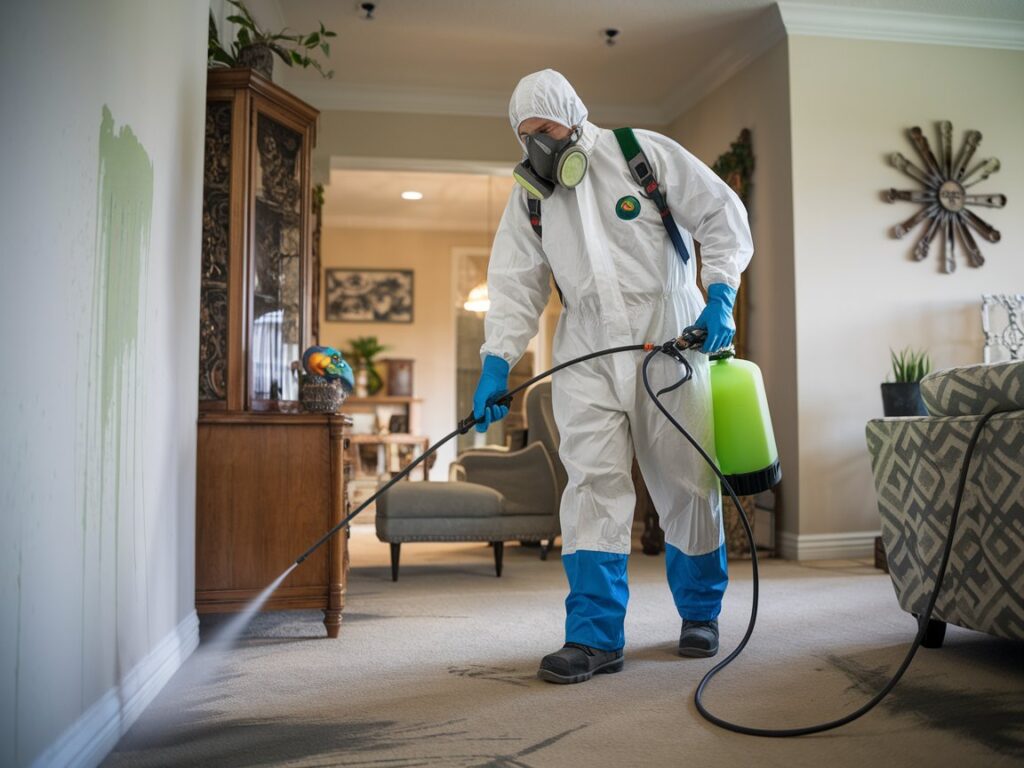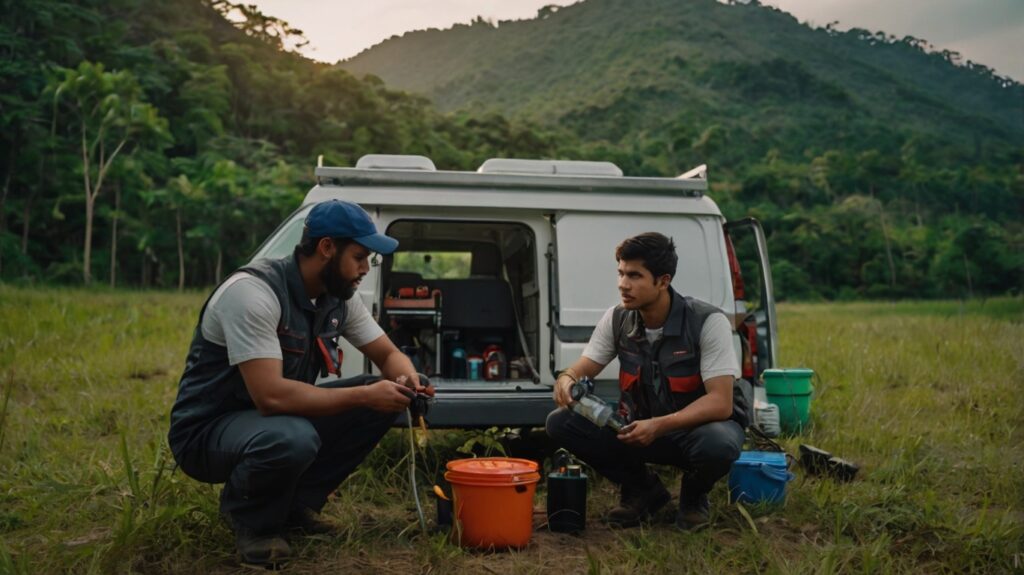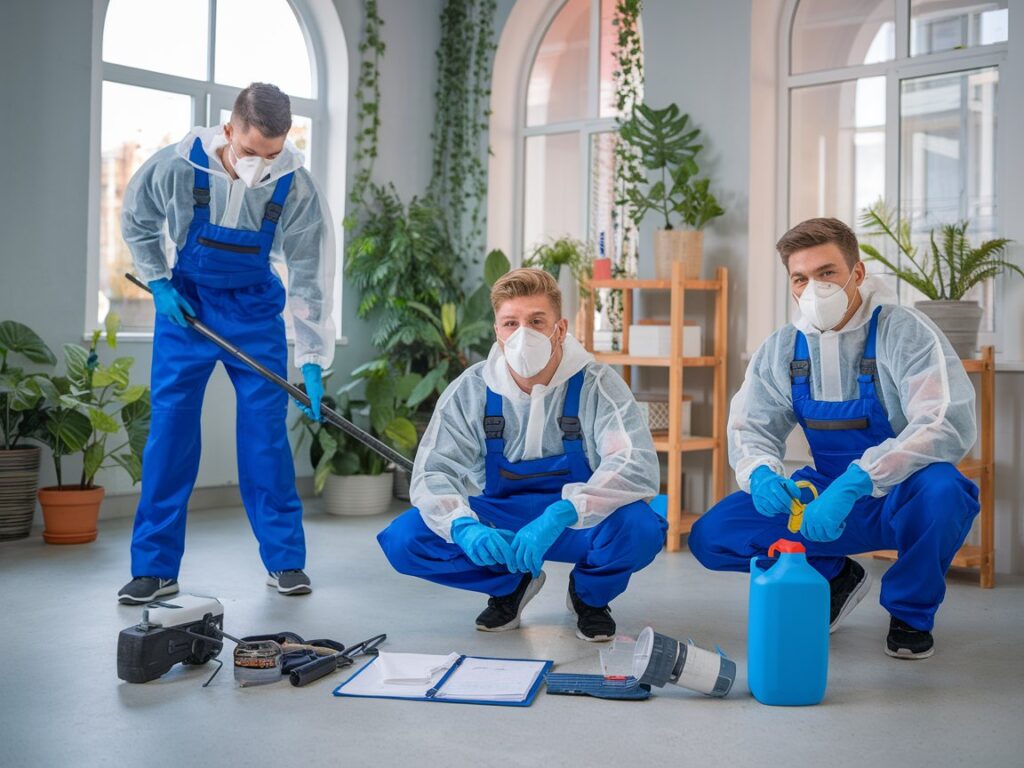Pest Control for Camp/Rig Crew Accommodation: Ensuring a Safe and Hygienic Environment for Catering and Living

In remote camps and oil rig accommodations, pest control plays a vital role in maintaining a safe, hygienic, and comfortable environment for crew members. Pests can not only be a nuisance but can also pose significant health risks and threaten the integrity of catering services. Ensuring effective pest control is crucial to safeguarding food supplies, protecting living spaces, and preventing potential diseases that could disrupt operations and lower morale. This article will explore the importance of pest control in camp and rig environments, the challenges faced, and best practices for effective pest management.

The Importance of Pest Control in Remote Camps and Rigs
Pests such as rodents, insects, and birds can infiltrate remote camps and oil rigs, particularly in isolated or rural locations. The presence of pests can affect various aspects of camp life, from contaminating food to spreading diseases, making pest control a critical component of health and safety protocols. Additionally, pests can cause damage to infrastructure, disrupt catering services, and affect the well-being of the crew.
- Health and Hygiene:
Pests can carry and transmit diseases such as salmonella, hantavirus, and E. coli, which can be spread through food contamination or direct contact. Cockroaches, mice, and rats can invade food storage and preparation areas, posing a serious risk to crew members’ health. Pests can also trigger allergies and cause respiratory issues, especially in close quarters. - Food Safety:
In camp and rig environments, where catering services are the primary source of meals, protecting food from contamination is critical. Pests such as flies, ants, rodents, and birds can access food supplies, spoil ingredients, and spread bacteria. Proper pest control measures are essential to maintain food safety standards and ensure that crew members have access to safe and hygienic meals. - Crew Comfort and Morale:
A pest-infested environment can be uncomfortable and frustrating for crew members. Constant exposure to insects, rodents, or other pests in living areas can lower morale, disrupt sleep, and affect the mental well-being of the crew. Effective pest control helps create a more comfortable, pest-free living environment, contributing to better morale and overall productivity. - Infrastructure Protection:
Pests like rodents can cause structural damage by chewing through wiring, pipes, and insulation. This can lead to costly repairs and even pose fire hazards. In remote locations where access to replacement parts and repair services is limited, preventing this damage is especially important to maintaining the camp’s operational capacity.
Challenges of Pest Control in Remote Locations
Providing effective pest control in remote camps and oil rigs presents unique challenges due to their isolation, harsh environmental conditions, and the specific vulnerabilities of these locations.

- Remote Location and Limited Access:
The isolation of camps and rigs makes it difficult to access pest control professionals regularly. In addition, the supply of pest control materials, such as traps, pesticides, and deterrents, can be limited due to transportation challenges. This necessitates proactive and continuous pest management strategies to prevent infestations before they become severe. - Environmental Factors:
Camps and rigs are often located in natural environments that may be home to a variety of pests. Wildlife, insects, and birds are naturally drawn to areas with food, waste, and shelter. The proximity of these natural habitats makes it easier for pests to infiltrate camp areas, increasing the likelihood of infestations if proper prevention methods are not in place. - Waste Management:
Improper waste disposal can attract pests, particularly in remote areas where waste management can be more difficult. Food waste, improperly stored trash, and standing water can create ideal conditions for pests to thrive. Effective waste management systems are key to reducing pest attractants in the camp. - Staff Training and Awareness:
In remote locations, camp staff may be required to handle pest control measures themselves, rather than relying on professional pest control services. Therefore, training staff to recognize early signs of infestations and take preventative action is crucial for effective pest management.
Best Practices for Pest Control in Camps and Rigs
Implementing an integrated pest management (IPM) approach is the best way to ensure long-term pest control in camp and rig environments. IPM combines preventive measures, monitoring, and targeted interventions to keep pests at bay. Here are some key best practices for effective pest control in remote camps and oil rigs:
- Regular Inspections and Monitoring:
Conducting regular inspections of both living and catering areas helps to identify early signs of pest activity. Monitoring traps, baits, and other indicators can help detect infestations before they become significant. Inspections should focus on food storage areas, kitchens, waste disposal sites, and sleeping quarters. - Proper Waste Management:
Effective waste management is one of the most important strategies for preventing pests. Garbage should be stored in sealed, pest-proof containers and disposed of regularly. Organic waste, such as food scraps, should be composted or stored in closed containers to reduce the attraction to pests. Drains and sewers should also be monitored to prevent pests from breeding in stagnant water. - Sealing Entry Points:
Rodents and insects can enter buildings through small cracks and gaps around doors, windows, and utility lines. Sealing these entry points with caulking, wire mesh, or other materials can help keep pests out. Screens on windows and doors are also effective in preventing the entry of flying insects like flies and mosquitoes. - Safe and Responsible Use of Pesticides:
While pesticides can be effective in controlling pests, they should be used with caution, especially in areas where food is prepared or stored. Only licensed pest control professionals should apply chemical treatments, and non-toxic options such as traps or natural repellents should be considered where possible. Pesticides should be stored securely to prevent accidental exposure or contamination. - Maintain Cleanliness and Sanitation:
A clean and well-maintained environment is essential for pest prevention. Regular cleaning schedules should be implemented, especially in kitchens, dining areas, and storage rooms. Food should be stored in airtight containers, and spills should be cleaned up immediately to avoid attracting pests. - Collaboration with Catering Services:
Catering and pest control teams should work closely to maintain food safety and hygiene standards. This includes keeping food preparation areas free of crumbs, spills, and waste, as well as properly storing ingredients to prevent access by pests. By maintaining strict food safety protocols, the risk of pests infiltrating kitchen and dining areas can be minimized. - Staff Training and Awareness:
All camp staff should be trained to recognize early signs of pest infestations, such as droppings, bite marks, or unusual odors. They should also be familiar with reporting protocols so that any pest issues can be addressed promptly. Training should also cover proper waste disposal and cleanliness standards to prevent attracting pests.
Conclusion
Pest control is a critical component of maintaining a safe and hygienic environment for crew members in remote camp and rig accommodations. Effective pest control ensures the integrity of food safety, protects crew health, and enhances the overall comfort and morale of the team. By implementing best practices such as regular inspections, proper waste management, and sealing entry points, camp operators can prevent infestations and reduce the risks associated with pests. In environments where the crew’s well-being is essential to productivity and operational success, proactive pest control measures are vital to ensuring a pest-free, safe, and comfortable living and working space.